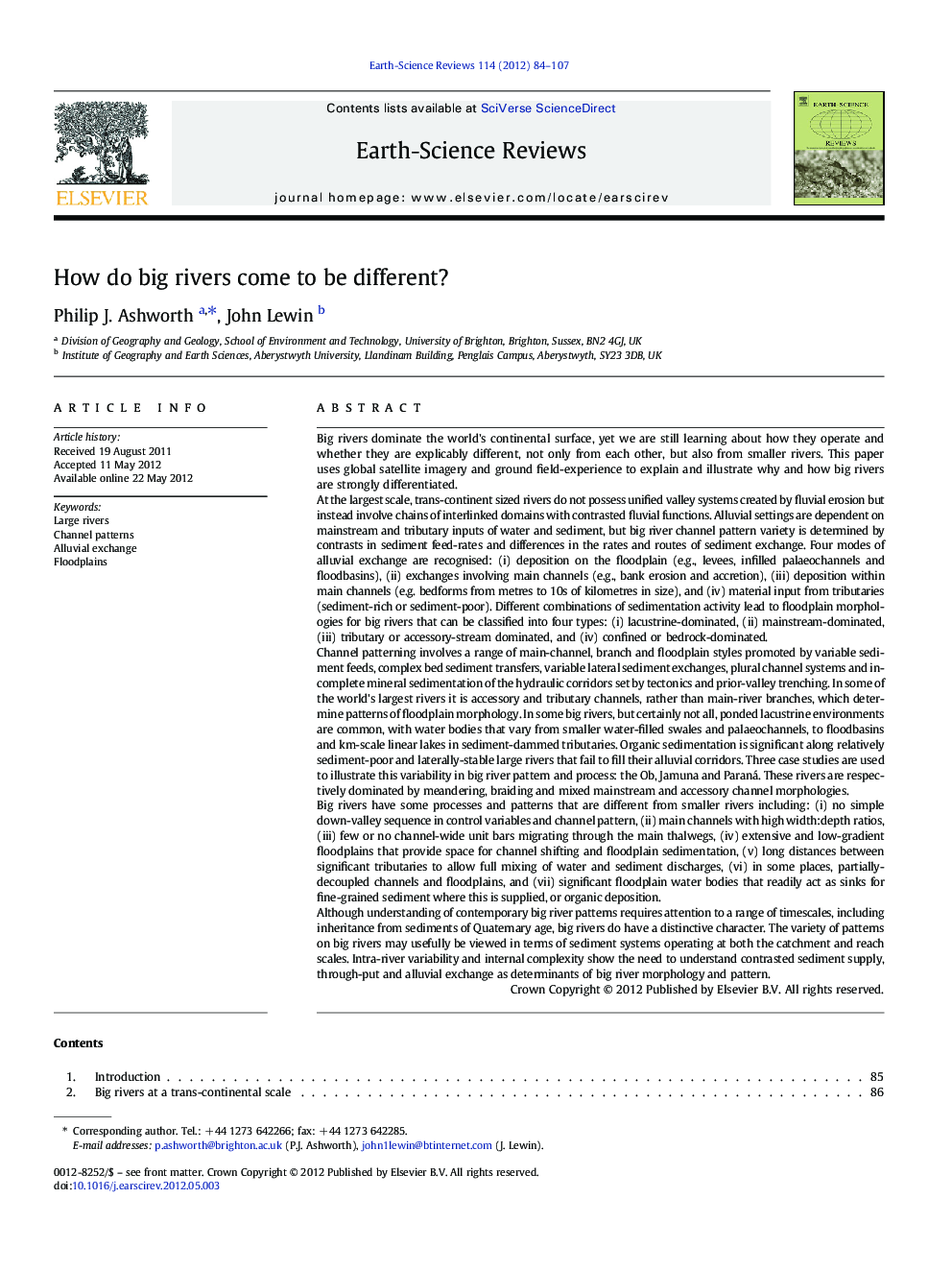| کد مقاله | کد نشریه | سال انتشار | مقاله انگلیسی | نسخه تمام متن |
|---|---|---|---|---|
| 4725958 | 1639989 | 2012 | 24 صفحه PDF | دانلود رایگان |

Big rivers dominate the world's continental surface, yet we are still learning about how they operate and whether they are explicably different, not only from each other, but also from smaller rivers. This paper uses global satellite imagery and ground field-experience to explain and illustrate why and how big rivers are strongly differentiated.At the largest scale, trans-continent sized rivers do not possess unified valley systems created by fluvial erosion but instead involve chains of interlinked domains with contrasted fluvial functions. Alluvial settings are dependent on mainstream and tributary inputs of water and sediment, but big river channel pattern variety is determined by contrasts in sediment feed-rates and differences in the rates and routes of sediment exchange. Four modes of alluvial exchange are recognised: (i) deposition on the floodplain (e.g., levees, infilled palaeochannels and floodbasins), (ii) exchanges involving main channels (e.g., bank erosion and accretion), (iii) deposition within main channels (e.g. bedforms from metres to 10s of kilometres in size), and (iv) material input from tributaries (sediment-rich or sediment-poor). Different combinations of sedimentation activity lead to floodplain morphologies for big rivers that can be classified into four types: (i) lacustrine-dominated, (ii) mainstream-dominated, (iii) tributary or accessory-stream dominated, and (iv) confined or bedrock-dominated.Channel patterning involves a range of main-channel, branch and floodplain styles promoted by variable sediment feeds, complex bed sediment transfers, variable lateral sediment exchanges, plural channel systems and incomplete mineral sedimentation of the hydraulic corridors set by tectonics and prior-valley trenching. In some of the world's largest rivers it is accessory and tributary channels, rather than main-river branches, which determine patterns of floodplain morphology. In some big rivers, but certainly not all, ponded lacustrine environments are common, with water bodies that vary from smaller water-filled swales and palaeochannels, to floodbasins and km-scale linear lakes in sediment-dammed tributaries. Organic sedimentation is significant along relatively sediment-poor and laterally-stable large rivers that fail to fill their alluvial corridors. Three case studies are used to illustrate this variability in big river pattern and process: the Ob, Jamuna and Paraná. These rivers are respectively dominated by meandering, braiding and mixed mainstream and accessory channel morphologies.Big rivers have some processes and patterns that are different from smaller rivers including: (i) no simple down-valley sequence in control variables and channel pattern, (ii) main channels with high width:depth ratios, (iii) few or no channel-wide unit bars migrating through the main thalwegs, (iv) extensive and low-gradient floodplains that provide space for channel shifting and floodplain sedimentation, (v) long distances between significant tributaries to allow full mixing of water and sediment discharges, (vi) in some places, partially-decoupled channels and floodplains, and (vii) significant floodplain water bodies that readily act as sinks for fine-grained sediment where this is supplied, or organic deposition.Although understanding of contemporary big river patterns requires attention to a range of timescales, including inheritance from sediments of Quaternary age, big rivers do have a distinctive character. The variety of patterns on big rivers may usefully be viewed in terms of sediment systems operating at both the catchment and reach scales. Intra-river variability and internal complexity show the need to understand contrasted sediment supply, through-put and alluvial exchange as determinants of big river morphology and pattern.
Journal: Earth-Science Reviews - Volume 114, Issues 1–2, August 2012, Pages 84–107